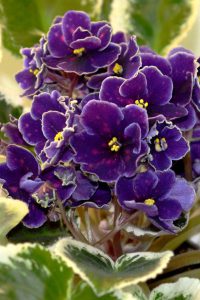
You might be surprised to learn that some of the most popular plants purchased in the past 5 years, never made it outdoors.
That’s right. Houseplants continue to trend in gardening categories worldwide. You may only associate houseplants with the memory of your grandmother’s hanging ivy basket or blooming begonia plant.
But a third of the houseplant consumer base comprises of Generation Y and Z young adults now. Social media outlets have been a major factor in creating such high demand for these plants.
The internet is full of pop-up plant sales, horticulturists enthusiasts, and plant friendly podcasts.
Houseplants are attractive for several reasons.
1. Air Quality
We learned during the pandemic, while being trapped inside our living spaces, that live plants improve air quality. This was first tested by NASA researchers back in 1989.
Humans breathe in oxygen and breathe out carbon dioxide. Plants do the opposite. The photosynthesis process helps reduce contaminants and decrease toxins that exist in the air.
2. Mental Health
Houseplant researchers have also measured lower levels of cortisol, a stress hormone, which can influence our mental health. This is yet another reason why so many people attribute gardening and nature as an unofficial therapeutic connection.
3. Decor
And a final benefit is the style factor. Decorating your home or business’s interior, at multiple levels, with different plants of varying colors and textures is just plain cool.

Maybe you are considering joining the craze or at least trying out an indoor plant as a test? Perhaps the most important consideration you should make first is to determine what the home’s environment has to offer?
Consider Existing Conditions
- temperature
- humidity
- air movement
Every home (and in some cases, every room) has existing lighting and humidity conditions. Just like your outdoor gardening spaces, interior rooms can also host a microclimate based on these conditions. A bathroom tends to be more humid, for example, and a home office somewhat warmer thanks to the heat given off by your tech equipment.
Houseplants have different needs so where one may work in your kitchen, another would prefer the bathroom. Unless you have a brand-new home or recently updated your entire HVAC system, the odds of the temperature matching in every room of your home are a long shot. Cooler air lies low to the ground and warmer air floats to the top. Plants need moving air to battle off fungus. The room’s lighting is the major factor in the performance of your plant’s health.
There are products you can purchase to give you the most accurate measure if you so desire. A humidity gauge and an incident light meter are two. If you are seeking more information on how to measure and add growing light to your space, please visit,
https://gardeningsolutions.ifas.ufl.edu/plants/houseplants/light-for-houseplants.html.
Soil
Next up is potting soil. Outdoor garden soil is not equipped to fulfill the needs of most potted indoor plants. Bagged professional mixes that include peat and sphagnum moss are the most successful but are also more expensive.
If you want to create your own healthy potted soil, venture over to this webpage for insight: https://sfyl.ifas.ufl.edu/lawn-and-garden/homemade-potting-mix/.

Watering
The last 2 necessary tasks are watering and fertilizing. Watering heavily but infrequently works for plants with roots that prefer well drained soil.
Fertilization
General fertilizer applications using NPK (Nitrogen, Phosphorus, Potassium) are as follows: foliar plants (non-blooming) ratio should be 3:1:2. For flowering houseplants the formula is adjusted just slightly to 2:3:1. Fertilizers come in different mediums and should match the need of each individual plant.
- Granular and water-soluble versions offer short nutrient boosts but leach out minerals faster than other types.
- Organic retains better but typically has a low nutrient value. Many folks seek out controlled release products for their longevity but they do tend to be most expensive.
Let’s assume you are now equipped with some knowledge on why houseplants are a good thing. Hopefully you feel confident in the where and how to care for your future houseplants.
Lighting
Let’s talk about which varieties of plants work well indoors based on their lighting needs.
Houseplants that prefer low lighting, with windows on the north side of your home, include
- ZZ/Zamioculcas zamiifolia,
- Snake/Dracaena trifasciata,
- Spider/Chlorophytum comosum and
- Rattlesnake/Calathea lancifolia
- Peace Lily/ Spathiphyllum wallisii,
- Ponytail Palm/Beaucarnea recurvata and
- Bromeilads.

Medium lighting is kind to
- Begonias,
- African violets/Streptocarpus sect. Saintpaulia,
- Boston ferns/Nephrolepis exaltata and
- Crotons.
High lighting, either direct or indirect, prefer east and south facing windows. This large group includes
- Fiddle leaf fig/Ficus lyrata,
- Peperomia, Pothos/Epipremnum aureum,
- Elephant’s Ear/Alocasia,
- Bamboo,
- split-leaf philodendron/Monstera deliciosa and
- succulents.
Bathrooms support high humidity houseplants so your orchids, ferns, begonias, Weeping fig/Ficus benjamina, and Chinese evergreen/Aglaonema would do well in this space.
Experts say there are 8 houseplants that attribute the most to improved air quality in the home. There are: Pothos, English Ivy/Hedera helix, Tulsi/Ocimum sanctum, Bamboo, Lady Palm/Rhapis excelsa, Peace lily, Snake plant and Barberton daisy/Gerbera jamesinoii.
To learn additional information on the care for many of the potted plants discussed in this article, please visit: https://gardeningsolutions.ifas.ufl.edu/plants/houseplants/index.html You can click on any one of the plants listed and it will take you to a specific fact sheet on that plant’s success.
Happy houseplanting!
This article was written by MGV, Candace Barone, and first appeared in the July 1, 2023 print edition of the Jacksonville Times Union.
 1
1



